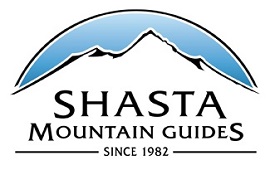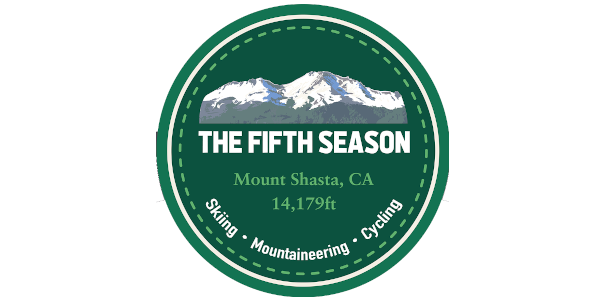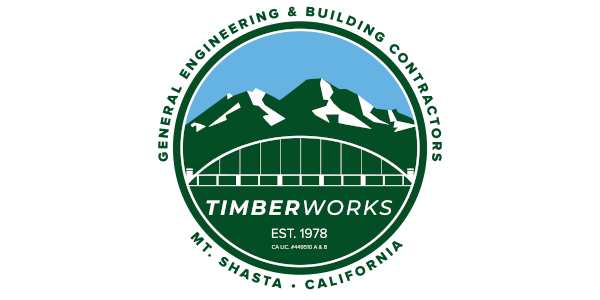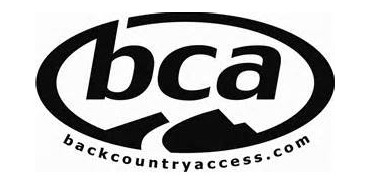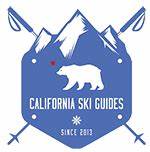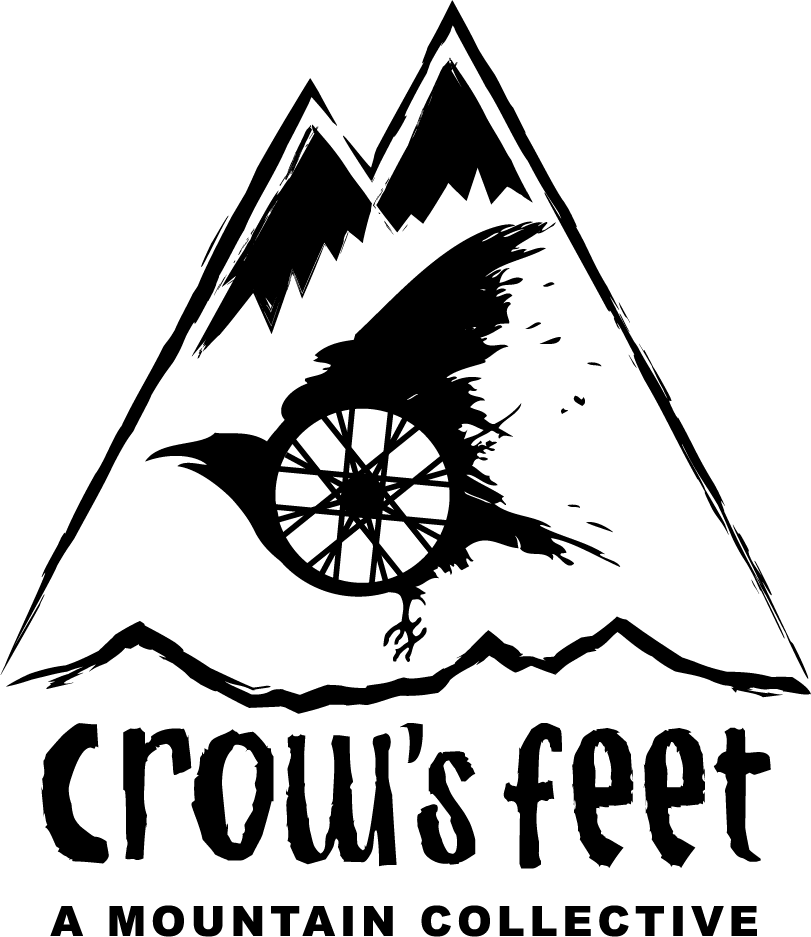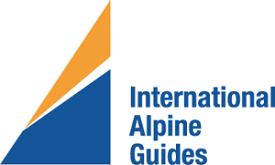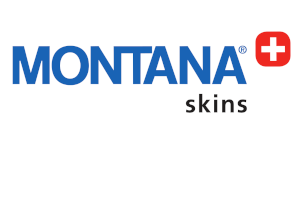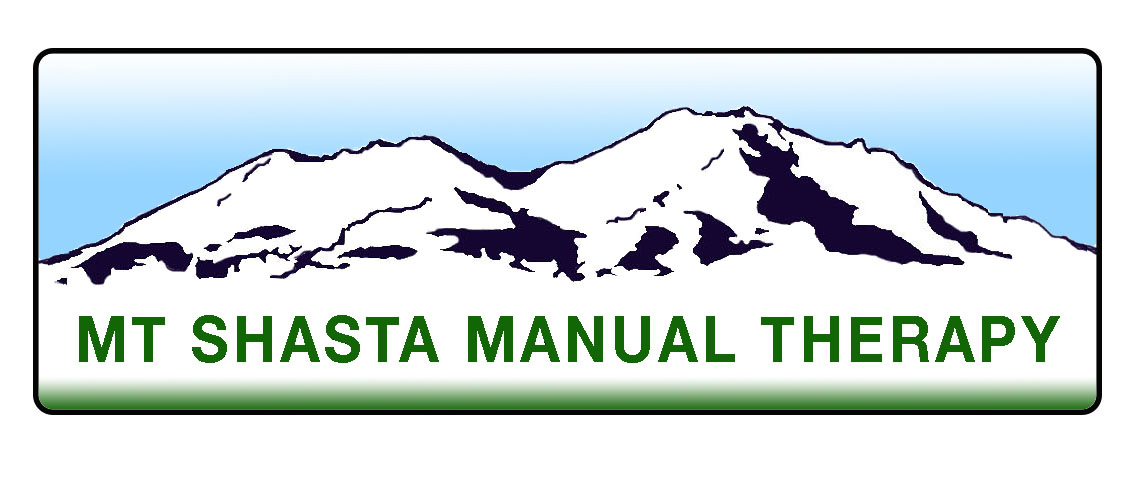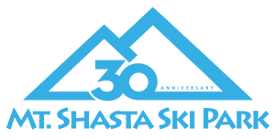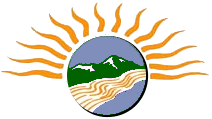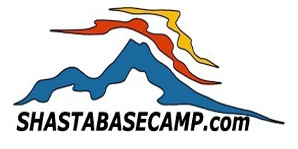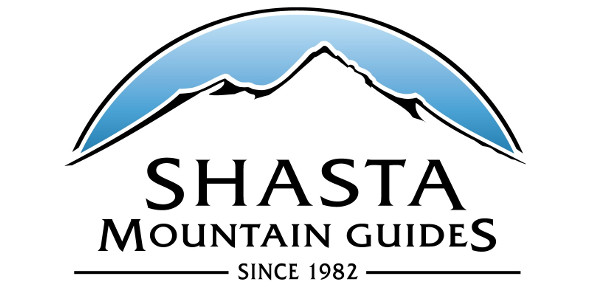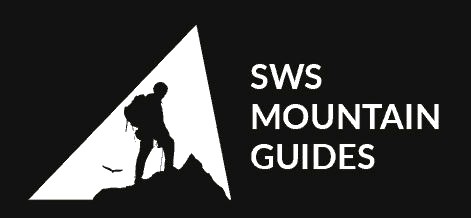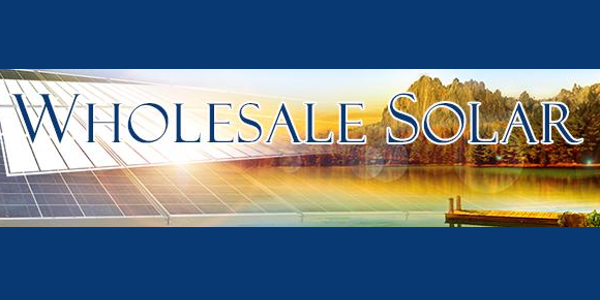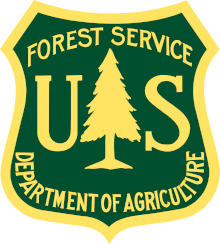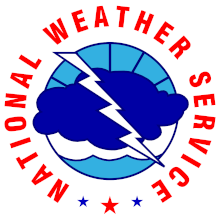You are here
Avalanche Advisory for 2014-03-29 06:57:42
- EXPIRED ON March 30, 2014 @ 6:57 amPublished on March 29, 2014 @ 6:57 am
- Issued by Nick Meyers - Shasta-Trinity National Forest
Bottom Line
The avalanche danger is CONSIDERABLE for above treeline areas (>8,000ft),
MODERATE near treeline, and
LOW for below treeline areas, all aspects and slopes steeper than 35 degrees.
Avalanche Problem 1: Wind Slab
-
Character ?

-
Aspect/Elevation ?
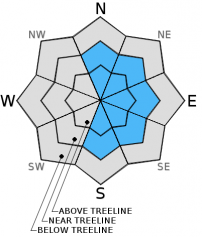
-
Likelihood ?CertainVery LikelyLikelyPossible
 Unlikely
Unlikely -
Size ?HistoricVery LargeLargeSmall

Following the onset of high intensity snowfall and southwest/west winds yesterday and last night, wind slabs have increased in size and depth near treeline and above treeline on N-NE-E-SE-S aspects. Human triggered avalanches will become possible today on slopes steeper than 35 degrees. New wind slabs 2+ feet thick are expected to have formed. In the more heavily wind loaded areas, avalanche size will easily be large enough to bury or injure a person.
Avalanche Problem 2: Storm Slab
-
Character ?

-
Aspect/Elevation ?
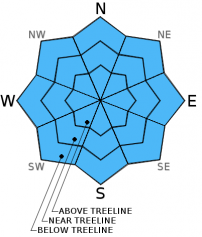
-
Likelihood ?CertainVery LikelyLikelyPossible
 Unlikely
Unlikely -
Size ?HistoricVery LargeLargeSmall

Periods of high intensity snowfall yesterday and last night hold good potential to create unstable storm slabs today. This avalanche problem will be highly dependent on what weak layers have formed within the storm snow. Human triggered shooting cracks are an excellent indication of the presence of this avalanche problem. Storm slabs may exist on all aspects and elevations. Weak layers will lie at density changes and/or at Friday's sun crust within the new storm snow.
Avalanche Problem 3: Cornice
-
Character ?

-
Aspect/Elevation ?
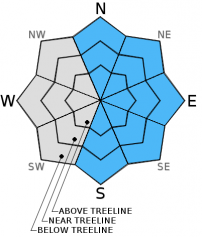
-
Likelihood ?CertainVery LikelyLikelyPossible
 Unlikely
Unlikely -
Size ?HistoricVery LargeLargeSmall

Small to medium size cornices have formed near ridgetops and bowls over the past week. Cornices will be easy to trigger though not likely to pose a major threat due to their small size.
Recent Observations
3-28-14: The tides have turned so to speak with our new snow layering on the mountain since yesterday. I mentioned our "right side up" layering of the snow yesterday, which means denser snow on the bottom and lighter density snow on top. Yesterday the mountain experienced a short lived warming trend which in turn created heavy, moist top layers and dryer bottom layers. This resulted in an "upside down layer cake". Instabilities were quick to show mid day in the form of wet loose roller balls and pin wheels on slopes steeper than 30 degrees. While storm and wind slab formation is likely on the upper mountain, I did not see any alarming evidence of such around the Gray Butte/Old Ski Bowl area. Visibility was again nil above treeline. Concern today lies with the increased snow load on top of the "upside down cake" snowpack. An additional 8-10 inches of snow fell overnight and has increase the load on potential weak layers. One may find a 2-3 cm sun crust halfway down the new snow that formed Friday afternoon in areas where the sun poked through. Look for weak layers to lie just below or on top of this crust. Stability tests still showed good bonding with old snow / new snow interface, however a 2 degree temperature gradient was present at this interface. We could see unstable persistent slabs forming near the end of this storm cycle involving all of the new snow.
Test results and observations:
Gray Butte - 1045 hrs - NE aspect - 35 degree slope - 32F - 34cm new snow since 3-25 - ECTN12@13cm down from top.
Gray Butte - 1345 hrs - E aspect - 21 degree slope - 32F - 33cm new snow - ECTX - Sun crust found in specific areas, 8cm down and 2-3cm thick. Weak layer revolved below and above this crust with poor fracture quality.
-----------------------------------------------------------------------------
Discussion from Friday, 3-28-14:
We are back into winter conditions on Mt Shasta after a spell of beautiful weather and fantastic spring skiing. Up to 1 foot of new snow has fallen over the week on the mountain. The weeks precipitation came in warmer and finished off cooler, leaving us with a right side up layering of new snow that seems to be well pasted to the old snow. Visibility was in and out yesterday and I was only able to make it to about 8,100 feet before whiteout conditions prevailed. My travels took me to all aspects around the Old Ski Bowl and Gray Butte area and was hard pressed to find any instability in the form of wind and/or storm slabs.
A few observation and test results:
On Gray Butte, 7,500 feet, south facing - 35 degree slope, I found 18cm of new snow with numerous ECTX stability test results.
In the Old Ski Bowl at the weather station, 22cm of new snow fell with a total snow depth of 150cm.
On the shoulder of Green Butte, 8,079 ft., east facing - 38 degree slope, numerous ECTN12-15 Q3 @ 12cm down from top of new snow. About 24cm of new snow at this location...the bottom 12cm of new snow was 15% density and the top 12cm was 10% density.
The most new snow was found consistently on NE - E - SE slopes, as westerly winds prevailed over the last 5 days. A random east facing knoll in the Old Ski Bowl around 8,000 feet hosted 34cm of new snow. About half as much new snow will be found on other aspects.
All in all, lower to mid elevation slopes and all aspects indicated a stable snowpack. I was unable to propagate any instability at the old snow/new snow interface yesterday. That being said, one should have concern for additional snow and wind loading of the snowpack this weekend where wind and storm slabs have already developed. Weak layers could lie at density changes within the snowpack or the old/new snow layer.
For climbers, conditions have been excellent on all routes. With the recent new snow however, one might want to postpone your trip until melt/freeze snow conditions return. The season for climbing Mt Shasta is going to be shifted forward this year. On a normal year with ample snow on the ground, good climing conditions usually start in April and can go all the way into July sometimes. This year is not the case...the best conditions to climb Shasta this year will be NOW through April and potentially May. The extent of good climbing conditions will hinge on our Spring weather. More snow could potentially extend the season and warm days with shining sun will shorten it. While the mountain looks like it's got a thick blanket of snow on it, in reality there is only about 2-5 feet of snow on the ground, depending on aspect and elevation. Good climbing conditions, in general, means snow on the mountain. As the snow melts, rockfall increases and a climb of Shasta becomes more dangerous. All in all, sooner than later will be best for climbing Shasta. Check the climbing advisory on our webpage also!
PLEASE NOTE: Snow conditions on most routes are smooth and firm, especially in the AM hours. Conditions as such have lead to accidents due to slip/falls and failure to self arrest. A slip and fall on smooth, firm and sometimes icy snow can result in a slide for life on the steeper slopes of Mt Shasta. Self arrest skills with an ice axe and proper crampon use are essential for a safe climb. Do not under estimate the importance of proper knowledge and skills with your ice axe/crampons/self arrest techniques. Further, an avalanche beacon, shovel and probe are recommended for any climbers attempting Shasta currently. Lastly, with snow on mountain, the rockfall danger has been low. However, rime ice can plaster exposed rocks on Shasta this time of year. As the days warm, the rime ice will flake off and fall onto climbers below, especially on the Avalanche Gulch route. Ice is like a rock and a HELMET should always be worn.
Aerial photo of the South side of Mt Shasta, taken by local pilot Troy Bainbridge about 2 weeks ago.
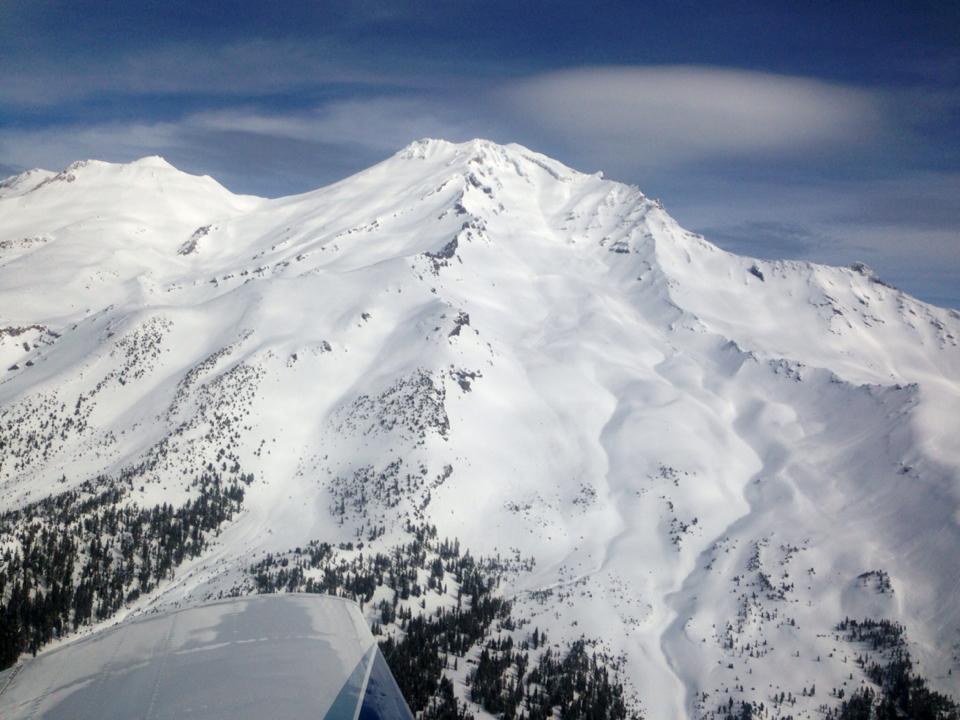
---------------------------------------------------------------------------------------------------------------------------------------------------------------
While Northgate, Brewer Ck and Clear Ck trailheads are officially closed, the bathrooms are still open with packout bags inside, and one can still access the Mt Shasta Wilderness. However, your summit pass and wilderness permits must be purchased at McCloud or Mt Shasta Ranger Stations. NO DOGS are allowed in the Mt Shasta Wilderness OR Sierra Club Property. Thanks!
---------------------------------------------------------------------------------------------------------------------------------------------------------------
Terrain: Remember most of the terrain that we like to play on is greater than 30 degrees. Avalanches are possible on anything steeper than 30 degrees. Avoid cornices, rock bands, terrain traps and runout zones of avalanche paths.
Weather: Most of our areas avalanche danger will occur 24-48 hours after a storm. We still can see persistent weak layers from time to time and we always will be sure to let you know about that! Heed the basic signs: Wind (significant snow transport and depositions), Temperature (rain/snow/rain/snow, which in turn weakens the snowpack), and Precipitation (Snow or rain add weight and stress to the current snowpack).
Snowpack: If snow accumulates, give the snowpack a chance to adjust to the new snow load before you play on or near steep slopes (greater than 30 degrees). Most direct action avalanches occur within 24-48 hours of recent snowfall. Watch for obvious signs of snowpack instability such as recent natural avalanche activity, collapsing of the snowpack (often associated with a “whumphing” sound), and shooting cracks. If you see these signs of instability, limit your recreation to lower angle slopes.
Human Factor: Don’t forget to carry and know how to use avalanche rescue gear. You should NOT be skiing or climbing potential avalanche slopes without having beacons, shovels, and probes. Only one person in a group should be exposed to potential avalanche danger at a time. Remember, climbing, skiing, and riding down the edge of slopes is safer than being in the center. Just because another person is on a slope doesn’t mean that it is safe. Be an individual! Make your own decisions. Heed the signs of instability: rapid warming, “whumphing” noises, shooting cracks, snowing an inch an hour or more, rain, roller balls, wind loading, recent avalanche activity.
Weather and Current Conditions
Weather Summary
In Mt Shasta City this morning at 0500, we have cloudy skies with a current temperature of 44F.
On Mt Shasta (South Side) in the last 24 hours...
Old Ski Bowl - 7,600 feet. The Old Ski Bowl weather station has received 6-8 inches new snow. The current temperature is 29F with a low of 27F and a high of 32F. Total snow depth is 65-70 inches.
Gray Butte - 8,000 feet - The current temperature is 28F. Temps have ranged from a low of 26F to a high 32F. Winds have been southwesterly, averaging 15-20 mph with max gusts topping out at 49 mph from the southwest.
Castle Lake and Mt Eddy (West side of I-5)...
Castle Lake - 5,600 feet, the current temperature is 33F with a low of 31F and a high of 36F. Castle Lake has received mostly rain with maybe a trace of new snow and has a current snowpack of 0-4 inches.
Mt Eddy - 6,500 feet, the current temperature is 32F with a low of 30F and a high of 34F. Mt Eddy has received 2-4 inches of new snow and the current snow depth total is 23 inches. Winds have averaged 2 mph and southerly in nature, with gusts to 20 mph from the south/southeast.
THIS SEASON: Since September 1st , we have received 12.30 inches of water, normal is 35.74 inches, putting us at 34% of normal. For the year of 2014, Mt Shasta has received 9.48 inches of water with normal being 19.86 inches which puts us at 47% of normal. And lastly, for March we sit at 61% of normal, receiving 3.44 inches of water, normal is 5.57 inches.
WEATHER SYNOPSIS:
While the brunt of our "atmospheric river" seems to have rolled through yesterday afternoon and last night, we should still see showery activity throughout the day today. A classic setup, temperatures will cool and lower snow levels to near 4,000 feet by Sunday, but precipitation will dwindle as temps cool and thus not have much impact. Regardless, the wintery weather is much welcomed and next week looks to host more low pressure with the chance of snow at lower elevations. Southwest winds will begin to die off today through Sunday at upper elevations.
Always check the weather before you attempt to climb Mt Shasta. Further, monitor the weather as you climb. Becoming caught on the mountain in any type of weather can compromise life and limb.
| 0600 temperature: | 29 |
| Max. temperature in the last 24 hours: | 32 |
| Average wind direction during the last 24 hours: | Southwest |
| Average wind speed during the last 24 hours: | 15 mi/hr |
| Maximum wind gust in the last 24 hours: | 49 mi/hr |
| New snowfall in the last 24 hours: | 6-8 inches |
| Total snow depth: | 65-70 inches |
Two Day Mountain Weather Forecast
Produced in partnership with the Medford NWS
| For 7000 ft to 9000 ft | |||
|---|---|---|---|
|
Saturday (4 a.m. to 10 p.m.) |
Saturday Night (10 p.m. to 4 a.m.) |
Sunday (4 a.m. to 10 p.m.) |
|
| Weather | Snow showers | Snow showers | Snow showers, mostly cloudy |
| Temperature (°F) | 36 | 23 | 32 |
| Wind (mi/hr) | South/Southwest 15-20 mph in afternoon | Southwest 10-15 mph | West 5-15 mph |
| Precipitation SWE / Snowfall (in) | / 1-3 | / 1-3 | / 1 |
| For 9000 ft to 11000 ft | |||
| Saturday | Saturday Night | Sunday | |
| Weather | Snow showers | Snow showers | Snow showers, mostly cloudy |
| Temperature (°F) | 23 | 12 | 19 |
| Wind (mi/hr) | Southwest/West 35-45 mph, decreasing through the day | Southwest 2-4 | West 20-30 mph, decreasing |
| Precipitation SWE / Snowfall (in) | / 2-4 | / 2-4 | / 1-2 |











